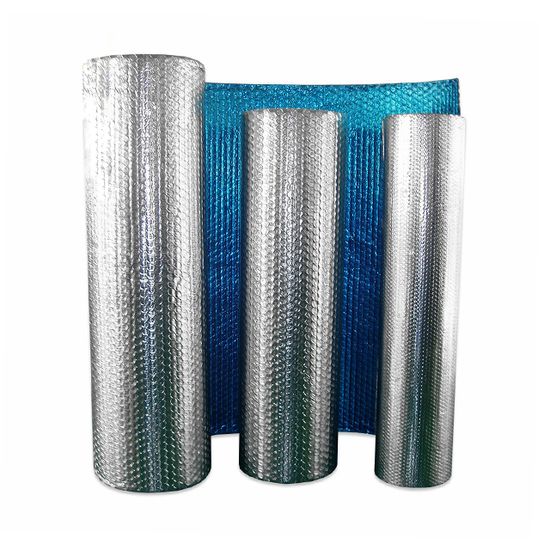How to Install Reflective Foil Insulation: Step‑by‑Step
Tired of watching your hard‑earned cooling or heating dollars drift out through the roof? Learning how to install reflective foil insulation correctly is one of the quickest, lowest‑mess ways to cut radiant heat gain in summer and slash winter heat loss. When installed by the book, radiant barriers can lower attic temperatures by up to 30 °F and trim cooling costs 5 – 10 %, according to the U.S. Department of Energy. As a factory‑direct wholesaler, Wellco Wholesale supplies bulk rolls, fastening tape, and all the safety gear featured in this guide, so pros and DIYers alike can complete the job without supply‑chain headaches.

Understanding Reflective Foil Insulation
How It Works: Radiant Barrier Physics
A reflective foil layer—usually aluminum bonded to a polymer scrim—bounces back up to 97 % of radiant heat. The barrier must face an air gap; otherwise the aluminum simply conducts heat. Low emissivity (≤ 0.05) and high reflectivity are the performance drivers.
Best Applications & Limitations
Radiant barriers shine in attics, metal buildings, pole barns, HVAC plenums, and shipping containers. They help most in hot or mixed climates where summer solar gain dominates. They are not a substitute for bulk insulation and add modest benefit in very cold zones.
Pre‑Installation Planning
Safety Gear & Tool Checklist
You will need:
-
Gloves, cut‑resistant sleeves, and eye protection
-
Long sleeves/respirator if fiberglass is present
-
Sharp utility knife or shears
-
Heavy‑duty construction stapler and ¾" staples
-
High‑temperature aluminum seam tape
OSHA reminds attic workers to stay hydrated and take breaks when ambient temperatures exceed 90 °F.
Measuring & Calculating Coverage
Measure the attic floor or underside of rafters (length × width). Add 10 % for overlaps and odd angles. Example: a 1,000 ft² ranch attic needs 1,100 ft² of foil—about five 4′ × 55′ rolls.
Step‑by‑Step Installation Process
Surface Prep & Moisture Considerations
Brush away loose insulation clumps, ensure decking is dry, and repair roof leaks. In humid regions add a Class II vapor retarder on the warm side if local code demands.
Cutting & Positioning the Foil
Roll the barrier perpendicular to rafters for fewer seams. Pre‑score on a sacrificial board to keep the foil smooth.
Fastening & Sealing Techniques
Staple every 6 " along rafters, keeping the foil taut. Overlap adjoining pieces by 2 " and seal with UL‑rated foil tape to preserve the radiant surface and stop air leakage.
Final Inspection & Air‑Gap Verification
Confirm at least ¾" of uninterrupted air separates the foil from roof sheathing. A $40 infrared thermometer should show attic plywood temperature 20 °F cooler than adjacent un‑covered sections.
Common Mistakes & How to Avoid Them
Skipping the Air Gap
Without the gap, conductive heat jumps the barrier—nullifying up to 80 % of the benefit.
Compressing or Tearing the Foil
Kneeling on foil or dragging tool belts creates micro‑tears that leak heat. Lay down waste plywood sheets if you must crawl over installed sections.
Ignoring Building Codes & Fire Ratings
Case study (anonymized): A 60,000 ft² produce warehouse in Arizona failed occupancy inspection after installers used uncertified foil lacking ASTM E84 fire testing. Re‑installing a Class A‑rated barrier cut interior peak temps 15 °F and reduced annual cooling demand 15 %. Labor redo cost twice what compliant material from Wellco Wholesale would have.
Performance Testing & Maintenance
DIY Thermal Performance Checks
On a sunny afternoon, compare attic air temperature and living‑space ceiling temperature before and two weeks after installation. Building Science Corporation notes that a radiant barrier can drop ceiling surface temps 6 – 9 °F, translating to more comfortable rooms and reduced HVAC cycling.
Long‑Term Care & When to Replace
Quality foil lasts 20 + years if it stays dry and intact. Inspect every other year for dust build‑up; a quick leaf‑blower pass restores reflectivity.
Cost, ROI & Sustainability
Upfront Costs vs Energy Savings
Materials run US $0.15‑0.25 per ft² in bulk; professional labor averages US $1.00‑1.50 per ft². For a 2,000 ft² house, a roughly US $2,500 install can pay back in 3‑5 cooling seasons.
Environmental Benefits
Lower HVAC runtime means 1‑3 tons less CO₂ per home annually. Aluminum foil is 100 % recyclable and many manufacturers source post‑consumer content.
Sourcing Quality Materials
What to Look For in Wholesale Suppliers
Seek double‑sided foil, perforated vs solid choices, ASTM C1313 compliance, and backed warranties. Consolidated freight and roll‑length customization can chop logistics costs by 12 %.
How Wellco Wholesale Supports Bulk Buyers
Wellco’s pallet pricing, custom slitting down to 18‑inch widths, and same‑day export documentation make it a preferred partner for farm outbuildings, greenhouse ranges, and home‑builder tracts. A Midwest landscape contractor reports saving 8 % on material costs after switching to Wellco Wholesale’s combined garden and building‑supply shipment.
Conclusion
Proper installation of reflective foil insulation starts with careful planning, continues with meticulous fastening and sealing, and pays off with measurable comfort and energy savings. Buy certified reflective foil insulation and accessories from Wellco Wholesale today—request a bulk quote or place your pallet order now.
Frequently Asked Questions
Q1: Does reflective foil replace fiberglass or cellulose insulation?
A radiant barrier complements—rather than replaces—bulk insulation by targeting radiant heat. Keep your existing R‑value and add foil for year‑round performance.
Q2: Can I install foil on top of existing attic floor insulation?
Yes, but staple it to the underside of roof rafters or drape it over joists shiny side up, leaving an air space above. Avoid sandwiching foil between layers.
Q3: How long does installation take for an average home?
A two‑person crew can finish a 1,500 ft² attic in a weekend, including prep and cleanup.
Q4: Will foil interfere with roof ventilation?
No, provided soffit and ridge vents remain unobstructed. Maintain a clear airflow path behind the barrier.
Q5: Is special tape necessary?
Use high‑temperature aluminum foil tape rated to match the barrier; standard HVAC duct tape degrades quickly in attic heat.
